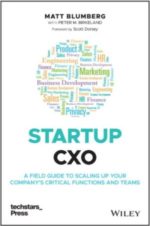9/11 Remembered in NYC
It’s the end of a long September 11 in New York City. We thought everyone would want to see the Tribeca close-up of the “twin beams” memorial that comes out from time to time to evoke the memory of the fallen towers.
The beams are truly amazing, reaching up high into the sky, seemingly endless. While they are geographically incorrect from this particular view (the towers stood behind and to the left of the new construction of the new 7 World Trade Center), they do the job and from most views look in place.
RSS and Email's Demise, Continued
RSS and Email’s Demise, Continued
Thanks to my colleague Tom Bartel, I discovered two good postings this week that I thought I’d pass on.
The first one by Ed Brill talks about Email vs. RSS and is a great contribution to the debate. It has some similar thoughts to my original posting about Prepping RSS for Prime Time.
The second one by Christopher Knight is entitled 22 Reasons Why Email Is Not Dead and is a great contribution to the dialog I contributed to in my Rumors of Email’s Demise posting a while back.
Our Next July 4?
Our Next July 4?
We could hear the church bells ringing this morning out our window at the 9/11 memorial ceremony as we observed a moment of silence at 8:48 a.m. to remember. What really got me, though, was when I walked past the site and heard some of the names being called out by parents of the victims, their voices alternating between bravely strong and quivering with emotion.
There will always be something awful about this day every year, a wound reopened fresh over a healing scar. I hope that it will continue to serve as a unifying force in our country, an annual rallying cry against those in the world who threaten our way of life and seek to hurt or terrify us. It’s not exactly Independence Day, but perhaps it can over time come to mean something just as important for America.
Breaking Up Is Hard to Do, Continued
One of my first postings was about how challenging it can be to fire people. This is a topic that can probably consume volumes, but Jerry Colonna has just written a great piece about it for his column in Inc. that’s definitely worth a read.
Authentication and Spam
Ok, privacy/anti-spam guru Anne Mitchell and journalist extraordinaire Pamela Parker have both said it: SPF — and Sender ID, and Domain Keys, and any authentication protocol) for that matter — are not about stopping spam.
I agree with both and want to emphasize Pamela’s main point, that authentication is the next layer of protection in the war against spam, not the end game. It will work with legislation and other methods currently employed to set the stage for the next wave of solutions, around mailer reputation. More on that in the weeks to come.
What Does Business Feel Like?
Mariquita and I spent last Saturday helping out our cousins, Michael and Marianne, at their wine shop, Hudson Wine Merchants, in Hudson, NY. I wrote a posting about one of our other trips up there earlier this year on how running a two-person proprietorship is an awful lot like running a larger company.
Last weekend, my takeaway from working in the shop was in some ways the opposite. Yes, business is business, and yes, you worry about some of the same broad things when you run a business of any size, but it FEELS different to run a small retail shop. What does it feel like? Well, quite frankly, it feels like business. Here’s what happens at the store in any given 8 minute period, and what we in a marketing services business would call it:
– Customer walks in the door (Prospecting/Lead-gen)
– Michael greets customer, introduces himself, and asks her what she is looking for (Marketing)
– Michael shows customer two options, makes recommendation (Sales)
– Michael offers free tasting of a new wine he is offering (Market Research/Product Management/Loyalty Program)
– Michael shows customer something else that she hadn’t previously considered but is consistent with her request; she adds to her order (Upsell)
– Michael walks behind counter, rings up order, takes cash (Finance)
– Michael wraps up bottles of wine, includes his business card in the bag, says goodbye (Operations/Customer Service)
So in 8 minutes, Michael does by himself what it takes the 70 people who work at my company months to do with a customer. Obviously, things at Hudson Wine Merchants and things at Return Path operate on different scales, but somehow it just felt a lot more real watching the whole cycle happen so quickly!
Political versus Corporate Leadership, Part I: Realist or Idealist?
It’s election season, the GOP convention is literally in my backyard, and while this is not a political blog, I can’t help myself. As we as Americans grapple with the question of who we want to be our next leader (or at least those people who live in the 11 annointed swing states do), I have had a lot of thoughts lately about the question of what makes a good leader, and what the differences are between successful leadership in politics and successful leadership in business.
James O’Toole’s article on President Bush on page 31 of the September issue of Fast Company (no link available yet) brings up a really interesting point in comparing Bush to former president Ronald Reagan. He asserts that “what made Reagan effective and respected was that his actions followed consistently from a positive worldview.” (I’d also argue that the positive worldview as a starting point had something to do with it, but that’s beside the point.) He goes on to say that Bush has an “implementation problem” in that he “has vacillated between contradictory approaches to leadership: realism and idealism.” His central thesis is stated very clearly that
“Realists and idealists can both be effective leaders. But one cannot be both at once…The leadership lesson for GW – and for any leader – is simple: Followers don’t much care if leaders are realists or idealists, but they distrust inconsistency.”
This may or may not be true in the political arena, but I know it’s not true in business. Jim Collins’ watershed books Built to Last and Good to Great — both must reads! — describe the ideal CEO as someone who can simultaneously be optimistic and idealistic about the future of the company while simultaneously recognizing and dealing with the realities of the short-term situation. Ironically for this posting, Collins calls this the Stockdale paradox, after retired Admiral James Stockdale, a military leader and erstwhile vice presidential candidate of Ross Perot in the 1992 election.
As CEO, I have to constantly be selling the vision of the company — what we’re trying to become and how we’re going to get there — in broad strokes to my investors, board, management team, employees, and even customers. It’s that vision that keeps the whole machine running and keeps everyone focused and excited and working hard towards our long-term goals. But I have to be equally vigilant about the mundane realities of the current quarter, making our numbers, containing costs, and running the machine. If I did either one without the other, I think the whole system would break down.
Is Bush’s problem, as O’Toole asserts, that he articulated two different types of reasons for the war in Iraq — one rooted in Realism (WMD) and one rooted in Idealism (freedom and democracy)? Same goes for his states reasons for the tax cut — Realism on the one hand (to stimulate the economy) and Idealism on the other hand (shrink government). I agree that the Bush Administration has occasional implementation problems and doesn’t have nearly the “following” that Reagan and other more successful leaders in the past have, but I don’t think they’re caused by combining Realism and Idealism in the President’s leadership style. I think the leader of the free world has to do both well, each at its appropriate time, in order to be effective at his job.
Next up in this series: Admitting Mistakes.
Wrap-up on Preferences?
In this Olympic Season, Brad gets the gold medal and possibly world record for longest post with his excellent posting on Participating Preferred securities. Fred gets the silver with his contribution on The Double Dip. Dave Jilk and others share the bronze for their many comments.
I won’t add more to the debate but will try to close it by tying together a few of these postings. Fred and Brad both wrote subsequent postings on the related themes of If It Looks Too Good to Be True, It Probably Is and Fantasy vs. Reality. These comments could easily be applied to my thoughts on VCs being silly about bidding up crazy long shot concepts and committing Venture Fratricide.
And of course, it begs the new media version of the age-old question: if a web service costs $25 million to build and then falls into the ether while investors and management sheepishly turn their backs, does it make any noise?
New Media Deal
Americans have long operated under an unwritten deal with media companies (for our purposes here, let’s call this the Old Media Deal). The Old Media Deal is simple: we hate advertising, but we are willing to put up with an amazing amount of it in exchange for free or cheap content, and occasionally one of those ads slips through to the recesses of our brain and influences us in some way that old school marketers who trade in non-addressable media can only dream of. Think about it:
– 30 minutes of Friends has 8 minutes of commercials (10 in syndication!)
– The New York Times devotes almost 75% of its total column inches to ads
– We get 6 songs in a row on the radio, then 5 minutes of commercials
– The copy of Vogue‘s fall fashion issue on my mom’s coffee table is about 90% full page ads
The bottom line is, advertising doesn’t bug us if it’s not too intrusive and if there’s something in it for us as consumers.
Since I started working in “New Media” in 1994, I’ve thought we had a significantly different New Media Deal in the works. The New Media deal is that we as American consumers are willing to share a certain amount of personal information in exchange for even better content, more personalized services, or even more targeted marketing — again, as long as those things aren’t too intrusive and provide adequate value. Think about how the New Media Deal works:
– We tell Yahoo that we like the Yankees and that we own MSFT stock in order to get a personalized home page
– We tell Drugstore.com what personal health products we buy so we can buy our Q-tips and Benadryl more quickly
– We tell The New York Times on the Web our annual income in order to get the entire newspaper online for free
– We let PayTrust know how much money we spend each month so that we can pay our bills more efficiently
– We let Google scan our emails to put ads in in them based on the content to get a free email account
– We give their email address out to receive marketing offers (even in this day and age of spam) by the millions every day
Anyway, after a few years of talking somewhat circuitously about this New Media Deal, my colleague Tami Forman showed me some research the other day that backs up my theory, so I thought it was time to share. In a study conducted by ChoiceStream in May 2004, 81% of Internet users expressed a desire for personalized content; 64% said they’d provide insight into their preferences in exchange for personalized product and content recommendations; 56 would provide demographic data for the same; and 40% said they’d even agree to more comprehensive clickstream and transaction monitoring for the same. All of these responses were stronger among younger users but healthy among all users. Sounds like a New Media Deal to me.
Don’t get me wrong — I still think there’s a time and a place for anonymity. It’s one of the great things about RSS for certain applications. And privacy advocates are always right to be vigilant about potential and actual abuses of data collection. But I think it’s becoming increasingly clear that we have a New Media Deal, which is that people are willing to sacrifice their anonymity in a heartbeat if the value exchange is there.
P.S. Quite frankly, I wish I could give spammers a little more personalized information sometime. They’re going to email me anyway — they may as well at least tell me to enlarge a part of my body that I actually have.
What's Your Preference?
More thoughts on some of Fred’s and Brad’s points about VC deal algebra, valuation, and liquidation preferences for venture-funded startups. My apologies if this gets a little too technical or too long!
On liquidation preference: Preferred stock makes sense, participating preferred makes less sense. Sure, a VC who puts capital at risk in a startup should be entitled to get his or her money out before management and common shareholders who are paid to run the business. But I’ve always had an issue (even when I was in the venture business, although admittedly not as a partner) with the participating preferred security which allows VCs to get their money out first, and then still receive their proportional share of the rest. Fred calls this “a loan with an option,” and that’s the best presentation I’ve ever heard of the security. But what’s always struck me as a bit over the top about this is that it gives VCs downside protection at the same time they’re negotiating even more upside in a deal.
One simple solution to this, if you can negotiate it, is a “kickout” provision which makes the participation feature on the security go away if the company becomes worth a multiple (usually 2x or 3x) of the post-money valuation of the financing. In other words, it gives the VC the downside protection they want but gives you and other shareholders more of the upside if things go really, really well.
On valuation and deal algebra: I completely agree that valuation is a derived number and that it’s completely misunderstood in early stage investing. However, I think that while there may be low correlation between valuation and what the business is worth today, there are a few things that have always bugged me about VC valuations:
While I understand that valuation is more a function of future potential than current value, it sometimes feels like companies get punished for having a track record. Let me clear about my point – it’s not that that I actually think VCs lower valuations unfairly when companies demonstrate poor results. It’s actually the opposite. VCs are quick to bid up the valuation on companies that don’t have revenue or even a lot of operations just because the idea is cool or because the theoretical market is large (Friendster, anyone?). I don’t think VCs as a group do a good enough job of risk-adjusting or future-competition-adjusting valuations for new companies, or they get caught up in what Fred once called Venture Fratricide and just pour money into new sectors en masse. This has the unintended side effect of making management teams of existing companies feel like their ideas aren’t interesting any more because they’re not new and shiny.
Second, it’s interesting to note that while VCs use valuation as a way of placing limits and getting protection on their bet about the future potential of the company and entrepreneur, entrepreneurs have no corresponding mechanism to place limits or receive protection against having a bad VC. (VCs actually have many tools at their disposal to reign in poorly performing management teams once the deal is signed – they can fire them, cram them down, force all their common stock to be on a vesting schedule or subject to clawback.) But make no mistake about it – a bad VC can almost kill a company, or certainly keep it from realizing its full potential, and once that deal is signed, the entrepreneur typically has little recourse. I’m not sure there’s an easy solution to this particular problem either, but it’s one that’s worth thinking through with a good lawyer the next time you negotiate a term sheet with a new venture investor (and certainly one that is easier to negotiate if you either have a good track record as an entrepreneur or multiple VCs interested in your company). I made one suggestion around participation in future financings in my earlier posting on term sheet negotiations — item #8.
The final thing that’s bugged me about valuations stems from what Fred calls the 1/3 rule (1/3 of a VC’s investments work out well, 1/3 go sideways, 1/3 go bad). As a result of the rule, valuations and deal structures can end up being about VCs getting as much upside as possible out of their winning deals to cover their losses from their zero-return deals. What bugs me about this is that entrepreneurs don’t have that same luxury of a diversified portfolio – they are 100% invested in terms of their human capital and often their investment capital in their company. I fully realize that this is the nature of the beast, but I’ve always felt as a result that entrepreneurs should negotiate – and VCs should be willing to give – proportionally much more upside to management in the event that the deal turns out to be a big winner. This point relates back to my first point about participating preferred securities.
Next up in this series…Reverse Engineering Venture Economics, and managing other kinds of investors (Angel and Strategic).
A More Cynical View of VCs
Steve Bayle has a similar posting to my How to Negotiate a Term Sheet posting from a couple weeks ago. While he has a lot of good points, his view is far more cynical than mine. I think an entrepreneur can be friends with his or her investors and board members and that their interests for the company are more often than not aligned. Of course an entrepreneur’s personal career goals may differ from an investor’s goals for the company, but that’s apples and oranges.
As long as both parties behave like grown ups, have a healthy dose of self-awareness, communicate openly, regularly, and clearly, and realize that successful business relationships require no less effort than successful marriages, the entrepreneur/VC relationship can work brilliantly. Call me an idealist (or maybe it’s just that I have great VCs), but entrepreneurship is all about making things a reality, isn’t it?




